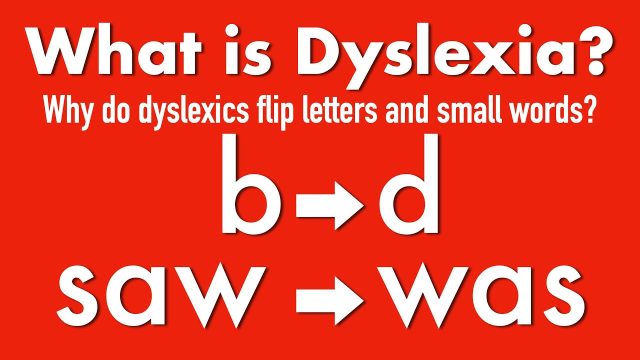Dyslexia and Reading Science
Dyslexics learn differently.

The difference is pretty much baked into the definition of dyslexia. In 1968, the World Federation of Neurology defined dyslexia as a “difficulty in learning to read despite conventional instruction, adequate intelligence and sociocultural opportunity.”
From the 1990’s going forward, brain imaging technology established without doubt that the brains of dyslexic children and adults showed different patterns of use for a variety of tasks, and in particular for tasks tied to reading and language.
The accepted definition morphed — in 2002, the International Dyslexia Association redefined dyslexia as being “neurobiological in origin” and “often unexpected in relation to other cognitive abilities and the provision of effective classroom instruction.” 1
Thus, by definition, dyslexia is not a result of poor teaching — but rather a difficulty acquiring reading skills that generally occurs whether or not the person has received good quality reading instruction.
Dyslexia is not the same as reading failure — plenty of children experience difficulties for the other reasons alluded to in the definitions. Most of the time when scientists study the process of learning to read, they are focused on typical patterns of learning. This makes sense: after all, the majority of school children are typical learners. Brain scientists have also extensively studied developmental differences tied to dyslexia, most often by comparing the brain functions of dyslexic subjects who are poor readers with typical learners who are good readers. Sometimes scientists compared the brains of poor-reading dyslexic subjects with younger children who have similar reading skills.
But only rarely have they looked at the brains of dyslexics who have become good readers. When they have, the studies have all yielded the same results: dyslexics who are good readers use their brains for reading in a different way than typical readers, in some cases radically different. At least two separate research teams have described capable dyslexic readers as showing “inverse” patterns of left- versus right brain-processing during reading tasks. 2 3
Scientists have dubbed dyslexics who become good readers as “resilient”, and their patterns of brain use or reading strategies employed as “compensatory”. They have also found that the development of these “compensatory” skills and brain activation patterns are essential; without them, dyslexics remain “persistently poor readers.” 4

We hear a lot of discussion these days about reading science, and the importance of integrating what we can learn from brain science into instructional practices. This makes sense — but because of the dyslexic difference, a good deal of the science may not apply when it comes to helping dyslexic children become good readers. It’s not that the science is bad — it’s just that in most of the studies, dyslexics are either not represented or they are statistical outliers, falling in the tail end of whatever statistical distribution is tied to measuring an effect size.
In other words, what works well for typically developing children may not work for dyslexic kids, because of their inborn brain differences. And because dyslexic children also represent a big chunk of the children who struggle to learn to read — the targets of reading reform movements — we are going to need an expanded research base to develop an inclusive “science of dyslexic reading” to inform school practices.
The IDA definition of dyslexia also tells us that the brain-based dyslexic difficulties “typically result from a deficit in the phonological component of language.” That means that we can expect most dyslexic children to experience difficulty learning to use phonetic decoding strategies. That is not something caused by poor teaching, so changing the way that phonics is taught won’t be enough to address the underlying issue.
Instead, it makes sense to look at the “compensatory” brain patterns that distinguish dyslexics who become good readers from those who continue to struggle. What are they, and can they be taught?
We know that reading improvement among dyslexic schoolchildren is correlated with greater reliance on right-brain and prefrontal pathways.5 And we know that for dyslexic adults who are capable readers, the brain responds to meaning-based (semantic) priming about 10 times faster than it reacts to orthographic or phonologic primes.6
We also know that the abilities or skills most strongly correlated with reading success among dyslexic learners are general background knowledge and vocabulary strength.7
Can we tailor early literacy education to foster those abilities? Of course. But do we? The IDA definition of dyslexia ends with this statement: “Secondary consequences may include problems in reading comprehension and reduced reading experience that can impede growth of vocabulary and background knowledge.” But these consequences are entirely a result of educational practices that prioritize decoding skills at the expense of delayed access to the type of instruction that can help dyslexic students become able readers. (See The Phonics Trap).
A simple solution is to supplement all early reading instruction with dyslexia-friendly strategies. This is the model followed with Davis Learning Strategies; research has shown this approach to be beneficial to all students.8 Of course, more research is needed to better understand various ways to integrate and implement tools for more comprehensive reading instruction in classroom settings.9
Let’s stop pretending that there is a uniform, settled, or limiting “science of reading” and instead focus on expanding options for all learners.
References
- International Dyslexia Association, Definition of Dyslexia (retrieved April 2023):
“Dyslexia is a specific learning disability that is neurobiological in origin. It is characterized by difficulties with accurate and/or fluent word recognition and by poor spelling and decoding abilities. These difficulties typically result from a deficit in the phonological component of language that is often unexpected in relation to other cognitive abilities and the provision of effective classroom instruction. Secondary consequences may include problems in reading comprehension and reduced reading experience that can impede growth of vocabulary and background knowledge.”
- Rumsey, Horwitz, et al (1999). A functional lesion in developmental dyslexia: left angular gyral blood flow predicts severity. Brain and language, 70(2), 187–204
- Waldie, Wilson, et al (2017). Reading network in dyslexia: Similar, yet different. Brain and language, 174, 29–41.
- Shaywitz, Shaywitz, et al (2003). Neural systems for compensation and persistence: young adult outcome of childhood reading disability. Biological psychiatry, 54(1), 25–33.
- Hoeft, McCandliss, et al. (2011). Neural systems predicting long-term outcome in dyslexia. Proceedings of the National Academy of Sciences, 108(1), 361-366.
- Cavalli, Colé, et al., Spatiotemporal reorganization of the reading network in adult dyslexia, Cortex, Volume 92,2017, Pages 204-221
- Brèthes, Cavalli, et al. (2022) Text Reading Fluency and Text Reading Comprehension Do Not Rely on the Same Abilities in University Students With and Without Dyslexia. Front. Psychol. 13:866543.
- Sharon Pfeiffer, Ronald Davis, Ethel Kellogg, Carol Hern, T.F. McLaughlin, and Gerry Curry. The Effect of the Davis Learning Strategies on First Grade Word Recognition and Subsequent Special Education Referrals. Reading Improvement (Project Innovation). Volume 38, Number 2 (Summer) 2001.
- For a recent example of research exploring the impact of a core-knowledge curriculum on reading achievement, see Grissmer, Buddin, et al (2023). A Kindergarten Lottery Evaluation of Core Knowledge Charter Schools: Should Building General Knowledge Have a Central Role in Educational and Social Science Research and Policy? (EdWorkingPaper: 23-755)










I am dyslexic. My teachers in elementary school and middle school (grades 1 through 8) did not have the time of day for a “dummy” like me. For 8 years I did not have a decent or concerned teacher at all. Looking back I do not think any teacher I ever had understood what dyslexia was. Consequently I was simply ignored and pushed aside in the educational system. I learned about and discovered what dyslexia was long after my military service and then six long years during my studies at my university. It has been a long time coming for me to recognize why I had to work ten times harder than “normal” kids that learned through conventional reading, text books, etc.
We can learn. We can acquire knowledge and we can become more intelligent. Not everyone learns the same way! Our educational system in this country sucks! We tend to focus on just the “smart” kids and not waste any time or effort on many who have so called learning disabilities. Perseverance, extra effort, hard work, understanding, patience and kindness must be encouraged and occur in our educational system. Free education and student loan forgiveness is rediculeous. One has to work hard and earn their education to appreciate it. Never underestimate the power and blessing that one with dyslexia has. The highest paid teachers in Chicago, NY, etc. aren’t worth two cents.
Better teachers, not more money poured into schools is the solution.